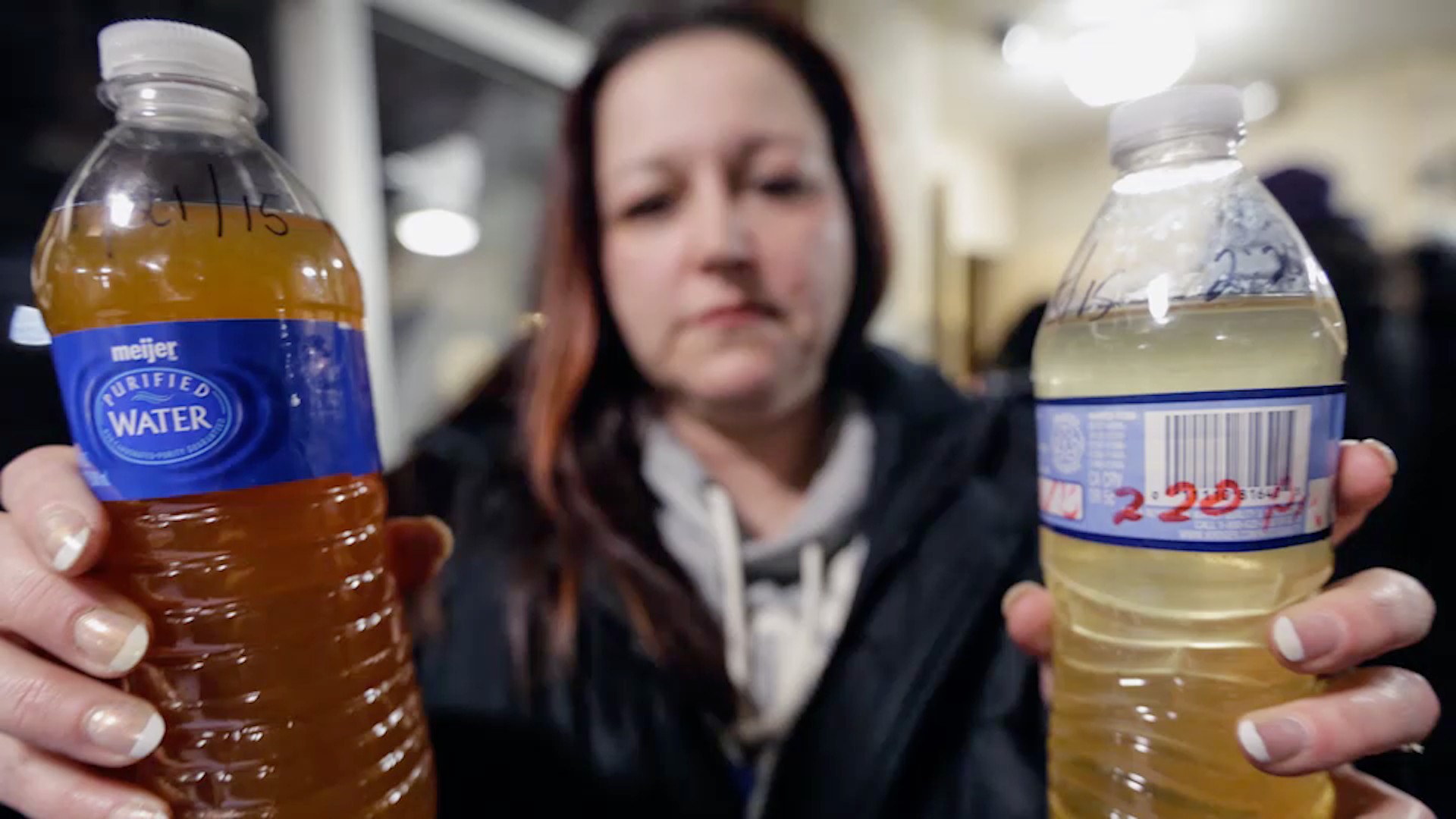This is an opinion piece by environmental activist Phyllis Omido.In October 2017, Marcella Favretto, Senior Human Rights Adviser at the United Nations Office of the High Commissioner for Human Rights (OHCHR), visited a slum community in the outskirts of Mombasa on the Kenyan coast. She visited Owino Uhuru because the community has been living under the shadow of a lead smelter, leaving 5,000 people grappling with the negative health effects of pollution over the past seven years.
Advertisement
Favretto’s visit was a significant one. As was clear from the smiling faces across Owino Uhuru, it symbolized a new reality: one where the sickness and deaths caused by the pollution were finally taken seriously. As I looked at the official delegation making their way across the slum, I struggled to hold back tears. I was standing amid the community members that had been arraigned alongside me in court, and charged with criminal charges for protesting the activities of the killer smelter.Some had lost their jobs and were still unemployed, as the industries they depended on for jobs boycotted workers from Owino Uhuru in solidarity with the smelter. I knew that they finally felt justified and legitimised as I did.Some of them actually ran and hugged Marcella. It might have felt awkward to the OHCHR team, but I didn’t stop them. I silently understood. They had not dared to believe that the UN supported their struggle until they actually saw the team standing there. To us, it meant we were finally justified, someone way up agreed with our viewpoint and our struggle, even though the state had largely ignored our plight thus far.The trouble started in 2008 when the national and municipal government issued licenses to a foreign smelter to set up operations within Owino Uhuru – without the prior informed consent of the community, access to information or any form of public participation.
Advertisement
Check out more videos from VICE:

Amidst promises of job creation and skills transfer, the community began to notice worrisome environmental changes within a few months after operations began. The thick liquid waste that made its way from the smelter into the community was toxic and all the household livestock – chicken, ducks, and goats – that drank from the drainage died. The air was heavy with pungent smoke that choked local residents, causing their eyes to water and children to develop chest-related complications. The iron sheets on household roofs literally corroded from the acid rain pouring down from the smelter’s massive chimneys.The community realized that the jobs they were promised came with a price that they weren’t prepared to pay.Community residents began to challenge the location of the smelter in 2010 when the realization it was far more hazardous than anyone could imagine fully set in. Threats to health and environment were just the beginning. The burden of defining the exact threat of the long-term effects the community faced was left to a largely illiterate community with no knowledge of heavy metal poisoning. State agencies ignored the complaints for years, claiming they were baseless and asking them to define what it was they were complaining about.Kenya is a country with little capacity to test for heavy metal poisoning. Visits from community members to the hospitals failed to yield a diagnosis until mid-2010 when three children – tested randomly at their own expense – were found positive for lead poisoning.
Advertisement
Favretto and her team heard gruesome tales during her visit. A mother had lost two children to lead poisoning. A widower described how he received his wife’s highly elevated blood lead level results one year after she had been tested. She had died 3 days earlier.Lead poisoning is defined by the World Health Organization as starting at five micrograms per decilitre of blood (5ug/dl). Compared to the recent case of lead poisoning in Flint Michigan, where the highest recorded level was 35ug/dl, the Owino Uhuru community’s highest recorded blood lead level stands at 420ug/dl.
Check out more videos from VICE:
Chelation therapy, which can remove heavy minerals like lead from the bloodstream, is a known and available treatment. It was just not available to the community because the government chose not to provide the medicines. They had been waiting for state intervention in the Owino Uhuru case since 2015 when the Kenyan Senate tabled its damning findings on the toxicity at the Owino Uhuru community, concluding that the locality was not fit for human settlement. This verdict was later echoed by the report by the Owino Uhuru parliamentary task force in the same year.The fight for the right to a healthy environment is not just the plight of the people of Owino Uhuru. Many desperately poor communities around the world are fighting for a right to life, right to health, right to clean water, right to livelihoods, and right to dignity -- all because their original right to a clean environment was not protected.
Check out more videos from VICE:
Chelation therapy, which can remove heavy minerals like lead from the bloodstream, is a known and available treatment. It was just not available to the community because the government chose not to provide the medicines. They had been waiting for state intervention in the Owino Uhuru case since 2015 when the Kenyan Senate tabled its damning findings on the toxicity at the Owino Uhuru community, concluding that the locality was not fit for human settlement. This verdict was later echoed by the report by the Owino Uhuru parliamentary task force in the same year.The fight for the right to a healthy environment is not just the plight of the people of Owino Uhuru. Many desperately poor communities around the world are fighting for a right to life, right to health, right to clean water, right to livelihoods, and right to dignity -- all because their original right to a clean environment was not protected.
Advertisement
Omido (left), and a mother and child affected by poisoning.
The facts are staggering. According to UN Environment, pollution of air, freshwater, oceans, and land kills more than 12 million people every year. Many African countries still treat heavy metal poisoning as a non-issue. However, as the developed world phases out its industries which cause heavy metal pollution, the burden automatically shifts to the developing world where those industries relocate. Africa must now stop lying to itself and admit that chemical poisoning is a rights issue, as deserving of state intervention as much as any other right. The right to a clean environment also must begin to be viewed in a holistic human rights perspective.In the case of Owino Uhuru, the right to a clean environment would have been protected only if the state had allowed the community its procedural environmental rights - access to information, public participation and access to effective remedy. It’s clear that when all three of these were violated, there was no way anyone would have assured their right to a clean environment.While grassroots activists have played a critical role amid vilification and intimidation, it’s also clear that their efforts have failed to forge effective guarantees of the right to a clean environment. It is therefore up to other players in the environmental movement to play their part. International bodies and countries that believe in the rule of law, equality and justice now need to join the fight, amplify grassroots efforts and ensure Kenya lives up to its responsibility to the environment and its citizens.First and foremost, Kenyan authorities must provide testing, treatment, and policies to mitigate incidents like the one in Owino Uhuru. But more importantly, future events like this one could be prevented before they even happen, if Kenya and other developing countries begin treating lead poisoning and other environmentally-caused health hazards as human rights issues. That could truly set us all on course for a healthier collective future.
